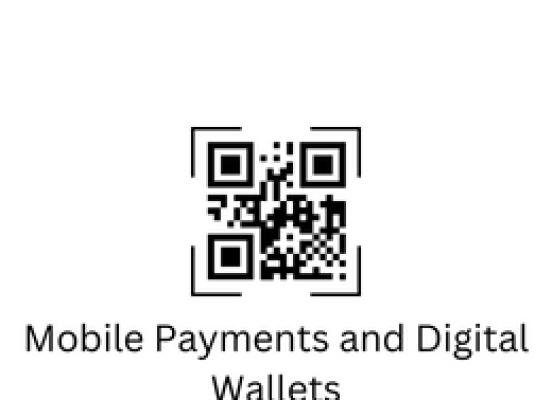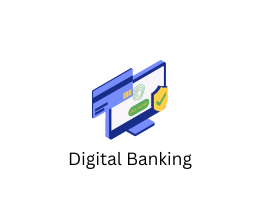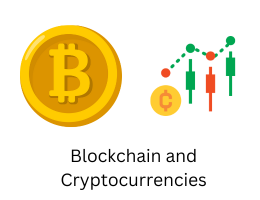
Mobile Payments and Digital Wallets
- By admin --
- Thursday, 04 Jan, 2024
The landscape of financial transactions has undergone a significant transformation with the advent of mobile payments and digital wallets. As technology continues to evolve, the way we handle money, make purchases, and manage our finances is becoming increasingly digital. This paradigm shift is driven by the convenience, speed, and security offered by mobile payment solutions and digital wallets.
Defining Mobile Payments and Digital Wallets:
Mobile payments refer to financial transactions conducted through a mobile device, such as a smartphone or tablet. These transactions can include various activities, such as making purchases at a retail store, transferring money to friends or family, or paying bills.
Digital wallets, on the other hand, are virtual wallets that store payment card information, allowing users to make electronic transactions. Digital wallets can be integrated into mobile payment apps or accessed through dedicated platforms. They securely store payment information, reducing the need for physical cards and simplifying the payment process.
Key Components of Mobile Payments and Digital Wallets:
1. Near Field Communication (NFC): Mobile payments often rely on NFC technology, enabling communication between devices in close proximity. This allows users to make contactless payments by simply tapping their mobile device on a compatible terminal.
2. Tokenization: To enhance security, digital wallets use tokenization, a process that replaces sensitive card information with a unique identifier or token. This ensures that even if a transaction is intercepted, the actual card details remain secure.
3. Biometric Authentication: Many mobile payment systems incorporate biometric authentication methods such as fingerprint scanning or facial recognition. This adds an extra layer of security, ensuring that only authorized users can access and use the digital wallet.
4. Mobile Banking Integration: Mobile payments are often linked to mobile banking apps, providing users with a comprehensive platform for managing their finances. This integration allows for real-time monitoring of transactions, account balances, and budgeting.
Advantages of Mobile Payments and Digital Wallets:
1. Convenience: One of the primary advantages of mobile payments and digital wallets is the convenience they offer. Users can make transactions with a simple tap or click, eliminating the need for physical cash or cards.
2. Speed: Transactions through digital wallets are typically faster than traditional payment methods. The instantaneous nature of these transactions enhances the overall efficiency of financial exchanges.
3. Security: The incorporation of advanced security features, such as tokenization and biometric authentication, makes mobile payments and digital wallets a secure option for financial transactions. Users can have confidence that their sensitive information is well-protected.
4. Reduced Need for Physical Cards: Digital wallets streamline the payment process by eliminating the need for physical cards. Users can store multiple payment methods within their digital wallet, reducing the clutter in their physical wallets.
5. Accessibility: Mobile payments provide financial access to individuals who may not have easy access to traditional banking services. This inclusivity is especially valuable in regions with limited banking infrastructure.
Challenges and Considerations:
Despite their numerous benefits, mobile payments and digital wallets face challenges that warrant consideration. One of the primary concerns is security, as the digital realm is susceptible to cyber threats and unauthorized access. Users and providers must stay vigilant in implementing and updating security measures to mitigate potential risks.
Interoperability is another consideration. Different digital wallets and mobile payment platforms may not be universally compatible, potentially causing fragmentation in the market. Standardization efforts are underway to address this issue and ensure seamless interoperability between various systems.
Additionally, user adoption and trust play crucial roles in the success of mobile payments. Some individuals may be hesitant to embrace new technologies due to concerns about privacy, data breaches, or a lack of understanding of the technology itself. Educating users about the security measures in place and the benefits of mobile payments is essential for widespread acceptance.
The Future of Mobile Payments and Digital Wallets:
As technology continues to advance, the future of mobile payments and digital wallets holds exciting possibilities. The integration of artificial intelligence (AI) and machine learning can enhance personalization, providing users with tailored recommendations and insights based on their spending habits.
Blockchain technology, known for its security and transparency, has the potential to further revolutionize digital wallets by ensuring the integrity of transactions. Decentralized finance (DeFi) applications built on blockchain may offer alternatives to traditional banking services.
Moreover, the Internet of Things (IoT) could lead to innovative payment scenarios, where smart devices seamlessly initiate transactions based on user preferences and behavior. For example, a smart refrigerator could automatically reorder groceries and make payments without direct user intervention.
In conclusion, mobile payments and digital wallets have reshaped the way we conduct financial transactions. The convenience, speed, and security they offer have made them increasingly popular among consumers and businesses alike. While challenges exist, ongoing advancements in technology and a commitment to addressing concerns will likely pave the way for an even more integrated and secure financial ecosystem in the years to come.





